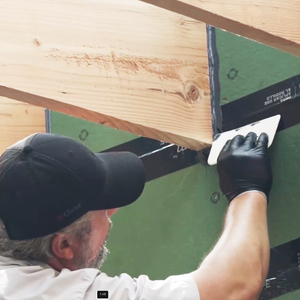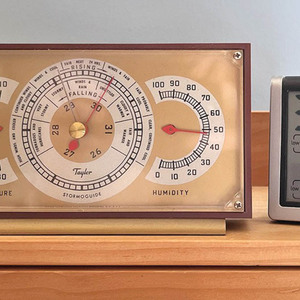Can some please outline the proper installation of a drain field
pipe system around a residential property. How deep, what size gravel,
type pipe sleeve, do you cover the pipe prior to back fill. should
gravel be over the top of the pipe, should one ever lay plastic
over the the pipe before back fill? Tango


















Replies
Ck with your local building dept. Septic is local government regulated, they'll have the specs.
There are a couple of plastic systems, Infiltrator is one, that replace the old stone & straw method. All you need is a small backhoe or equivilant and you're in.
Joe H
need to clarify - a drain field is part of a septci system for processing wate water after the septic tank. But you said "around the house" which sounds like a perimeter drain by context.
So- Which are we talking about?
Welcome to the
Taunton University of Knowledge FHB Campus at Breaktime.
where ...
Excellence is its own reward!
Piffin:thanx for the reply: your right but what we are talking aboutis the trench to direct water flow away from the house etc.lighted somewhere else. like a dench with gravel, slotted pipe,
gravel over and or sleeve. hope this helps.tango
There are three parts to thisOn the surface, the grade should always direct rainfall to run on th esurface away from the house.Then many people have roof gutters to collect that water and it should be led away from the founation at least four feet on the surface or led into an underground PVC pipe system with pitch of 1/8" per foot to daylight or a sump pit for redirect.The perimeter drain is a perforated pipe separate fropm this. Never lead the roof runoff into a perimeter drain. Taht is injecting additional water to the worst place for it, but it get done far too often.The perimeter drain is perforated pipe, laid with the holes at 4 and 8 o'clock. Some put a sock on the pipe and others lay the washed stone first and surrond it with landscape fabric. I like a few inches of stone under the pipe, and a foot all around it, with fabric over and around that. The pipe should definitely lay lower than the slab inside the wall, or in the case of a slab on grade, it should be below the footing.
I hope U don't get too much more drain field advice;)
Welcome to the Taunton University of Knowledge FHB Campus at Breaktime. where ... Excellence is its own reward!
Piffin,Good details, that's what we use also. One further point I learned the hard way. When running a drain like this to daylight, as it gets closer to surface as it exits grade, switch to solid pipe. I try and do this as soon as I'm within about 18" of grade in depth. Had a house years ago with a walk out basement and perimeter drains running to daylight about 50' from house. Got a call a couple of years later from homeowner that his basement was real wet after a bad storm. Went and looked and the drain appeared to be plugged. I tried to snake it with no luck. Ended up digging up drain tile back about 30'. The native grasses had sent roots down so deep they got into drain tile and completely closed off 4" pipe for the last 30'. It was a solid mass and thriving on the nice water supply it was getting. Some vegetation might bear solid pipe even deeper.
Yep, I switch to solid for the lateral run as soon as we leave the T fitting
Welcome to the Taunton University of Knowledge FHB Campus at Breaktime. where ... Excellence is its own reward!
I'm not a plumber, I'm just poor............well necessity is the mother of invention.. Anyway I had to change my septic because I was building an addition. I couldn't afford a septic guy. I contacted my county health department so here's the rest of the story.
Hired a soil engineer
Took report to County Sanitarium guy
He told me how far down I could go. Ten inches... or a mound system (we have a high water table
He also told me I needed 300 lin foot of drain line (translated- six fifty foot lines)
He told me the tank had to be 100 foot from well.
Like a construction permit, I had to provide site plan and detail construction plan.
My particular county wanted a trench with 6" of 1" gravel. Sewer line covered with 6" of 1" gravel . !2" total gravel.
Line the whole trench filter cloth. Top the gravel with cloth
My system is (1) 1000 gal tank plus (1) 1000 gal storage tank with a pump
The the pump pumps up a 2" pipe to the distribution box which break into six lines
IMPORTANT........water goes down hill (what a revelation) so think like water. The area where I was placing the trenches wasn't flat, it had a rise in the middle of the field. You have to maintain a proper slope 1/4 in/foot from the distibution box to the drain pipes......or the distribuiton has to be at the top of the hill.
other than that ,the trenches and the drain pipes have to be level. Ideally the water fills the drain pipes. The holes in the drain pipe are at 4 and 8 o'clock, so the whole pipe drains at the same time if level
Inspections?? the inspector came out to do a site inspection(1), when the pipes were laid out not covered with anthing(2), and a final inspection with 12" soil on top(3)
I ran alot of string with a string level and measured down from the string to determine trench depth and front to back level.
Used a large sears dump cart with a garden tractor to move the gravel. Yea I shoveled alot of gravel. Felt guilty.....all those guys paying a health club and I get a work out home
Runninig all the strings were the hardest part.
Every county or city is different. I believe ours is more lienient because they want us to build..Why...so they can raise our taxes........
Dennis in NW Indiana
NDS has the info you want:
http://www.ndspro.com/technical_info/installsubsurface.aspx